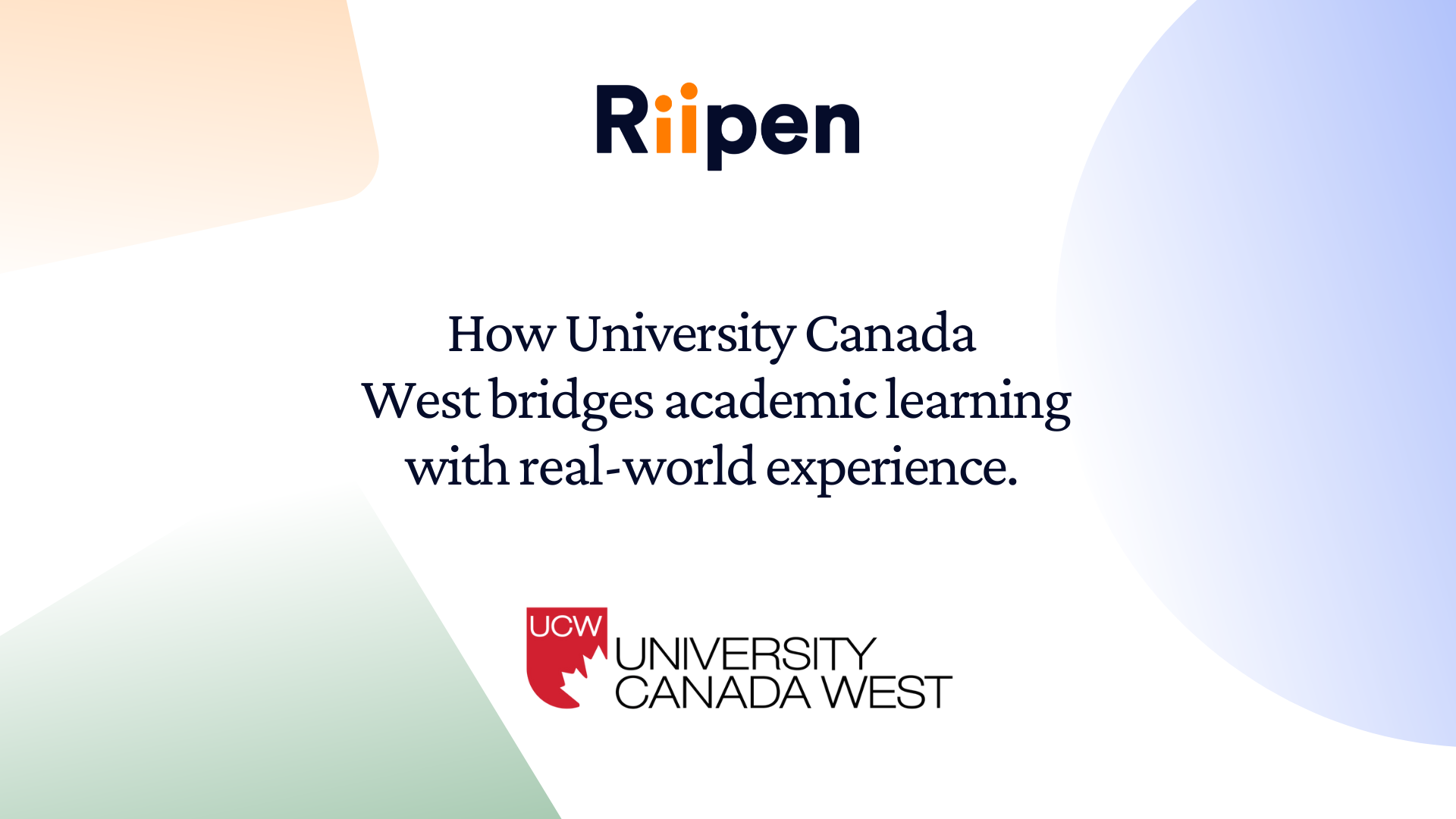Webinar recap “Flexible and scalable approaches to project-based learning.”
.png)
On October 8, 2025, Riipen, in partnership with the Council for Adult and Experiential Learning (CAEL), hosted an insightful webinar titled "Flexible and Scalable Approaches to Project-Based Learning," featuring Josh Mitchell, Riipen’s Vice President of Academic Partnerships, and Eleanor Buxton, Riipen’s Senior Manager, Solutions Architecture. Together, they provided a comprehensive look into how project-based learning (PBL) can be seamlessly integrated across the student experience. The session explored both the challenges and opportunities associated with PBL, offering actionable insights on making it a scalable, sustainable, and impactful approach for educators, institutions, and students alike.
Watch the full webinar recording:
The evolving landscape for students.
The webinar kicked off with Josh framing the current landscape of higher education. He emphasized the shifting expectations of today’s learners, who are not only seeking academic credentials but also practical, real-world experience. With an increasingly diverse student population representing various backgrounds, life experiences, and career aspirations, there is a growing demand for education that bridges the gap between theoretical knowledge and its practical application in the workforce.
Josh articulated that today’s students view higher education as a pathway to stability, career opportunities, and personal growth. For many, the goal is not just to complete a degree but to acquire competencies that directly align with industry demands. This requires a significant shift in how educational institutions approach learning. Josh argued that institutions need to integrate authentic, hands-on learning experiences into the learner journey, ensuring that graduates are not only knowledgeable but also capable of applying that knowledge in professional and civic contexts.
Key takeaway: Today’s students expect a holistic educational experience that prepares them for both career success and societal impact. Institutions must deliver this by providing real-world applications across a student’s education journey.
Flexible models project-based learning.
Eleanor shifted the conversation to explore the variety of project-based learning models beyond traditional course-embedded approaches. She highlighted how PBL can take multiple forms— from stacking certificate programs with aligned employer projects, to interdisciplinary credit-bearing internship courses, as well as co-curricular or extracurricular engagements, meeting learner demand for career-connected learning. Each model is intentionally designed to align with desired learning outcomes, program goals, and institutional capacities.
Drawing on examples from Riipen’s U.S. partners, Eleanor illustrated how these design choices play out in practice. Some institutions have implemented paid short-term projects to build discrete skills for course completers and provide rapid industry feedback. Others are bringing together local industry partners and alumni as project providers, hosting learner teams that then have reciprocal value for students and the institution's broader community. Virtual and hybrid models were also shared, demonstrating how institutions can expand reach and accessibility while maintaining project authenticity.
Eleanor emphasized that thoughtful PBL design involves aligning the project scope, assessment approach, and stakeholder involvement with the intended learning outcomes. By layering multiple models, institutions can tailor PBL to meet the diverse needs of their student populations and program objectives, providing meaningful experiences across their campus community.
Key takeaway: Project-based learning is most effective when institutions adopt multiple models—curricular-embedded, co-curricular, or virtual—and make design choices that align with learning objectives and student needs. Showcasing these models in action, as demonstrated by U.S. partners, provides a blueprint for implementing PBL flexibly, impactfully, and scalably.
How Riipen supports scalable models.
Josh then highlighted how Riipen facilitates the integration of scalable PBL models. He acknowledged that traditional methods of connecting students with industry projects often place a significant administrative burden on faculty, requiring them to source opportunities, set expectations, and manage logistics. Riipen reduces these barriers by offering a centralized platform where employers can post projects, and educators and program leads can easily incorporate them into their learning experiences.
Riipen’s flexibility was central in Josh’s discussion. He explained how the platform accommodates various PBL models—whether short-term projects embedded into a single course or long-term, program-level collaborations that reflect professional practice. This adaptability allows institutions to tailor PBL to their specific needs.
By centralizing the process, Riipen also ensures that students engage with authentic challenges and gain real-world experience without creating additional workload for faculty. The platform’s design provides clear structures and support, allowing educators to focus on the educational experience rather than logistical concerns.
Key takeaway: Riipen’s platform streamlines the management of PBL, providing scalable and sustainable solutions that can be easily integrated across courses, programs, and departments.
Practical advice for institutions.
As the session concluded, Eleanor and Josh shared their practical recommendations for institutions looking to implement or expand their PBL initiatives. Their advice was clear: start with pilot programs. By integrating PBL into a few courses or departments, institutions can gather data on student engagement, learning outcomes, and feedback from partners. This initial evidence can be leveraged to build a strong case for broader implementation.
In addition, they emphasized the importance of storytelling in driving institutional change. Sharing student success stories, particularly those that showcase the transformative impact of PBL on both academic and professional trajectories, can complement quantitative data and foster buy-in from faculty and administrators. Over time, combining data and narratives can shift the perception of PBL from a supplementary tool to a core element of the academic experience.
Key takeaway: Pilot programs, supported by data and compelling student narratives, provide a proven pathway for scaling PBL within institutions. Storytelling is a powerful tool for building support and demonstrating the value of PBL at all levels.
Wrap-up & resources.
The webinar concluded with a reminder that project-based learning is more than just a teaching strategy—it’s a cultural shift within institutions. By embedding PBL, institutions can ensure that students graduate with the applied skills, confidence, and adaptability needed to thrive in the workforce. These qualities not only prepare students for their careers but also equip them to be lifelong learners and active contributors to society.
Want to explore how Riipen can help your institution build a project-based culture? Book a chat with our team.










.png)



















.png)







